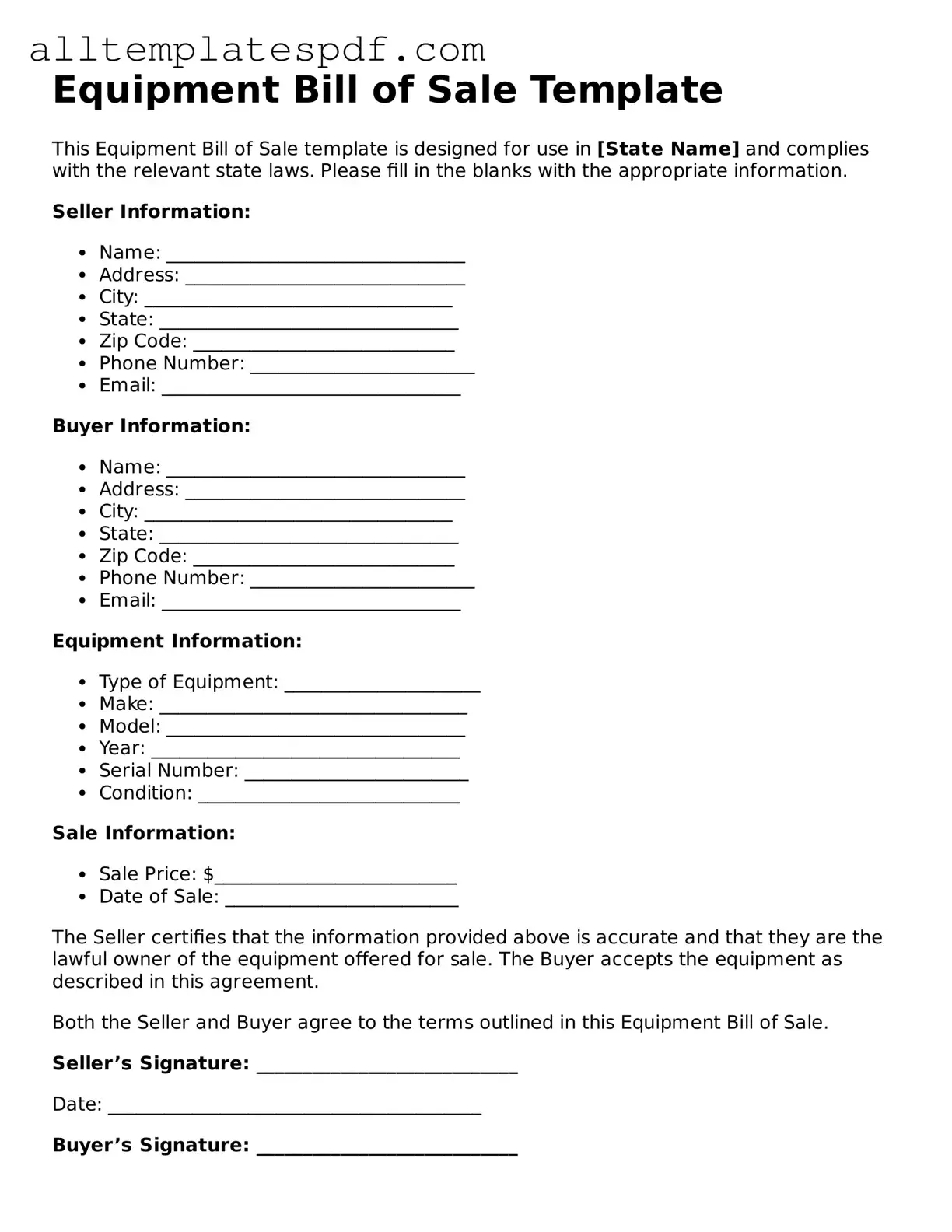Attorney-Approved Equipment Bill of Sale Template
The Equipment Bill of Sale form is a legal document that records the transfer of ownership of equipment from one party to another. This form serves to protect both the buyer and the seller by outlining the details of the transaction, including the equipment's condition and sale price. Understanding how to properly fill out this form is crucial for a smooth transfer of ownership.
Ready to complete your Equipment Bill of Sale? Click the button below to get started!
Open Editor
